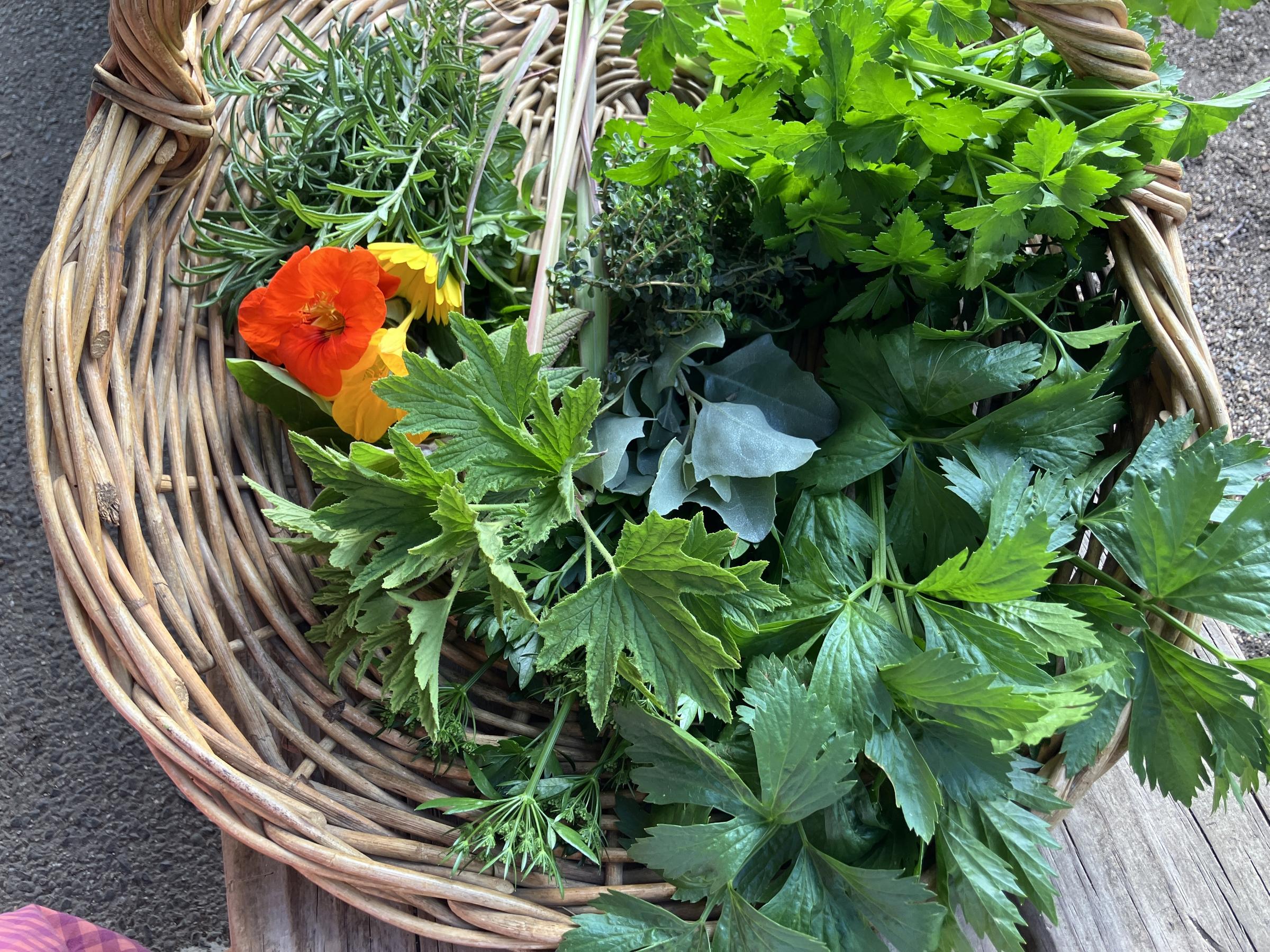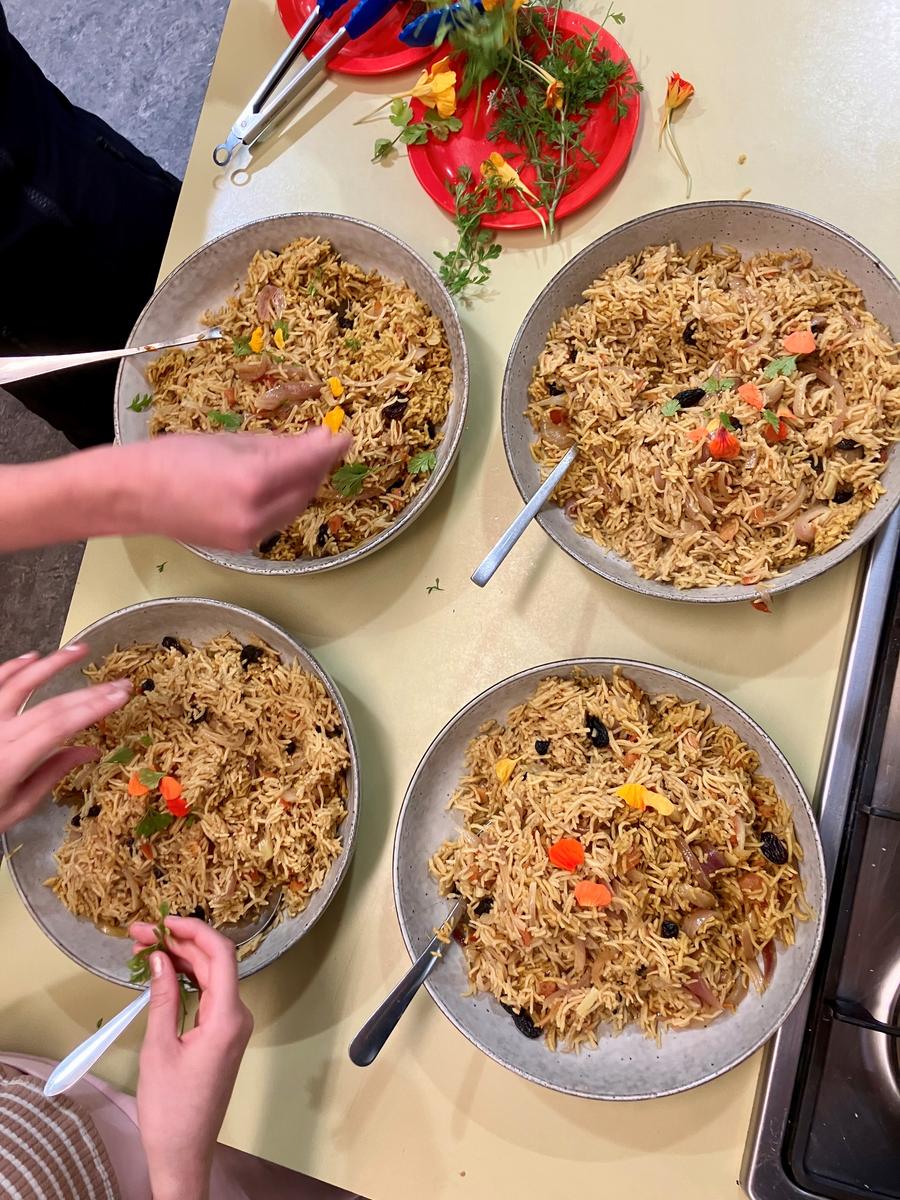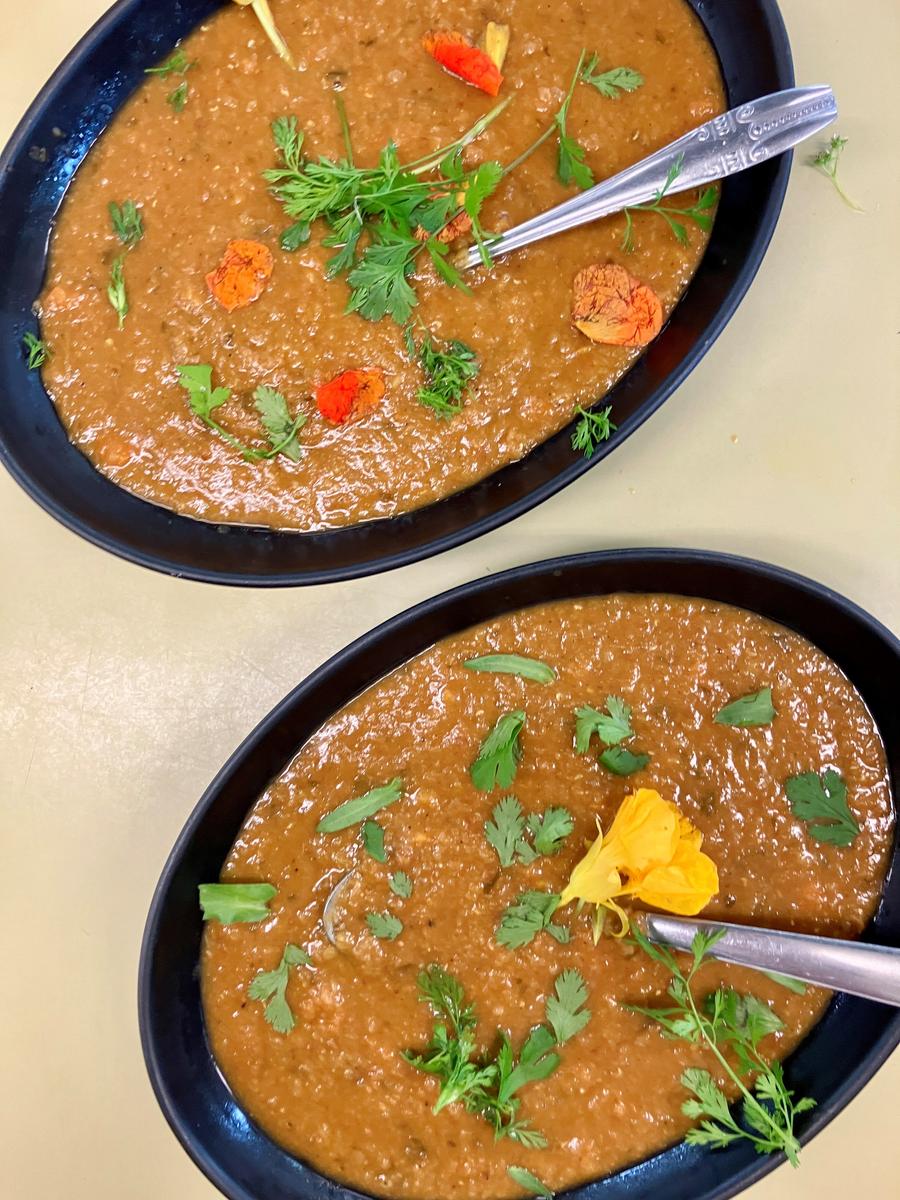Kitchen News

From Erin, SAKG teacher
In the Kitchen.
Last week the Year 6's prepared and shared some delicious Somali food. On the menu was Maraq Misir (lentil Soup) and Bariis (rice dish) made with Xawaash (spice mix). Everyone showed great teamwork skills delegating tasks of dicing onions, carrots and tomatoes, measruing spices, rinsing rice and lentils and picking herbs. The kitchen smelt wonderful as our fragrant NMPS made xawassh was added to our dishes and patiently waited for them to cook.
Our recipes came from the cookbook "In Bibi's Kitchen -The Recipes and Stories of Grandmothers From Eight African Countries that Touch the Indian Ocean. See below exerts explaining each dish
'Xawaash (pronounced HA-wash) comes from the Arabic word hawaij, which is used to describe Yemeni spice blends. Xawaash touches just about every Somali dish. It's like the garam masala of Somalia, and the mix of flavours is truly the flavour of the Indian Ocean. Each Somali home cook prepares theres differently. This is how Hawa prepares hers. She always makes a large batch so she has it on hand to add to dishes as she cooks, adding layers of deep, warm flavours to everything'
'Maraq Misir, also known as shurbo cadas, is a hearty red lentil soup found in Somali cuisine. This soup is great year round but is often in heavy rotation during Ramadan, when it makes for a light and nourishing option for breaking one’s fast. Alongside a foundation of quick-cooking red lentils, this soup gets its body from tomatoes, onions and carrots, and deep flavor from a layered blend of spices and fresh coriander leaves. While many lentil soup variations exist, the warmth of the xawaash spices builds with each sip and makes this a uniquely Somali interpretation. The texture can suit your preference: Serve it as is, with some bite, blend it until smooth and creamy, or opt for a partly blended, half-chunky soup'
'Bariis is a rice pilaf served with a variety of dishes. The mix of savory and sweet, more specifically the combination of cooked onions, warm spices, and sweet raisins, is very typical of Somali food. Bariis even makes for a wonderful breakfast with a fried or soft-boiled egg on top. Rinsing and soaking the rice ahead of time really helps the grains let go of their dusty coating and also cook more quickly and evenly. A pot of bariis helps Hawa feel at home and connected to her Somali family and roots even when she is very far away from both of those.'



